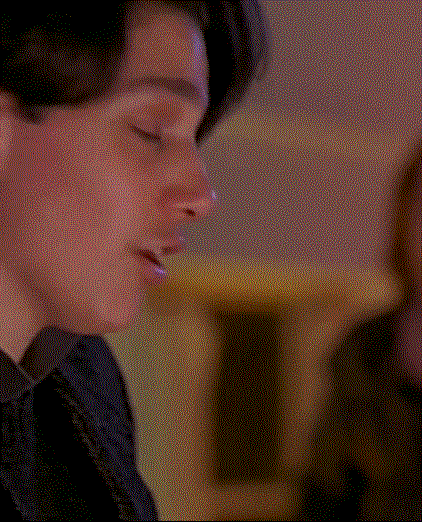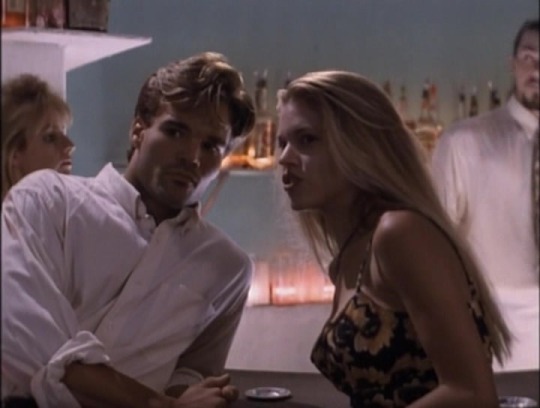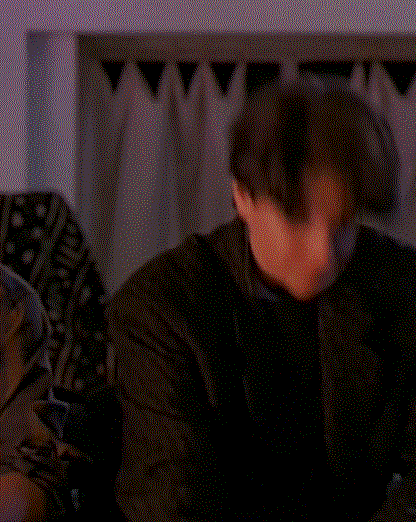#shootfighter ii
Explore tagged Tumblr posts
Text




ruben patterson icons [shootfighter ii]
#shootfighter#shootfighter icons#ruben patterson#ruben patterson icons#william zabka#william zabka icons#billy zabka#billy zabka icons#icons#spector original
53 notes
·
View notes
Note
What is Shootfighter actually about? I don't have it in me to watch it.
the thing is. i've seen this movie (and shootfighter ii) three times now and i could honestly not tell you what the plot is about. i black out every time i see billy zabka's tits. they're definitely shootfighting! i know that much!!
#im so sorry anon but i just do not retain any of the plot i just spend the entire time going googoo gaga its honestly embarrassing#shootfighter#*asks
18 notes
·
View notes
Text
any Ruben/Shark fans out there?
very niche fanfiction for all of you niche fans
only the finest merchandise of Mature-rated sexy times
#shootfighter#shootfighter ii#ruben patterson#billy zabka#and his beautiful breasts#my writing#fanfic#shootfighter fanfic
4 notes
·
View notes
Photo




#cobra kai series#cobrakaiedit#lawrusso#ship: daniel x johnny II 'you like speedwagon'?#daniel x johnny#daniel larusso#johnny lawrence#90's au#90's lawrusso au#au#ruben x chris#chris x ruben#ruben patterson#chris niny#naked in new york#shootfighter#william zabka#billy zabka#ocelunagifs#ocelunaedit#tkk#the karate kid#tkk au
366 notes
·
View notes
Text
It's sad when a sequel's biggest fault is that it's actually got a more coherent script than the first one. This movie lacked the cheesy schlock of the first one, and did nothing to make up for it. Have you seen the gifs of Ruben putting things in his mouth? Okay. You're good. Stop there. (Unless someone does a Shark-Ruben-Nick clip set, in which case I guess you could probably watch that.)
7 notes
·
View notes
Text
What does it say about me that I watched BOTH shootfighter movies before seeing karate kid II? Nothing good probably
2 notes
·
View notes
Text
Shootfighter II: Kill or be killed (1996)
•Part 03/03










65 notes
·
View notes
Text
Even though I saw it on YouTube months ago, I’m watching William Zabka in To the Ends of Time, which is currently free on Amazon Prime in the US.
EDIT: Also free on Prime for your Billy viewing pleasure: Hypersonic, Antibody, High Voltage, Ablaze, Python II, Project: Human Weapon, Gale Force, and maybe Shootfighter 2. Where Hope Grows is currently free on Vudu.
#william zabka#billy zabka#to the ends of time#amazon prime video#Amazon#youtube#hypersonic#python 2#ablaze#high voltage#project: human weapon#gale force#shootfighter 2#where hope grows#vudu
9 notes
·
View notes
Text
Review: Death Match (1994)
“Go ahead, if you and your friends want to look like Swiss cheese”

SOURCE
My opinion regarding kickboxer/actor/activist Ian Jacklin is a little more complicated than with most karate stars, but in a nutshell, I thought the guy was pretty cool until I realized that he spends his life promoting quackery to cancer patients. Nevertheless, I enjoy his acting career and see it as a microcosm of a successful B-movie trajectory, with Death Match being the climax. Created outside of the major video studios, it has an unambitious story but a good production with a huge amount of martial talent. It’s required watching for fans of the subgenre and easily the best of Jacklin’s film career.
The story: An ex-fighter (Jacklin) goes undercover in a deadly fighting circuit to rescue his kidnapped best friend (Nicholas Hill).
I need to emphasize the state of the production, even though it may seem odd to praise a film for looking average. Keep in mind how easy it is for indie movies to turn out like crud. By all rights, Death Match should’ve been interchangeable with a typical Cine Excel production (underpopulated vistas, dubbed dialogue, etc.) but it’s actually indistinguishable from most Pepin-Merhi or Shapiro-Glickenhaus actioneers. As a matter of fact, it would be pretty aspirant for a PM or SG production, given the impressive list of names in the cast. To be fair, we sometimes only get a little taste of them – cult stars Richard Lynch and Jorge Rivero have only one scene apiece as Mafia bosses – but the list of talent goes on. Martin Kove and Matthias Hues are good as the lead villains, with Kove supplying the drama and Hues most of the fighting. Steven Leigh, Eric Lee, and Benny Urquidez don’t have any fights but do well in their dramatic scenes. Michele Krasnoo, Butch Togisala, Randall Ideishi, Ed Neal and Peter Cunningham partake in some of the highlighted brawls, and many more show up elsewhere. If these names aren’t clicking, you haven’t been watching movies like this long enough. The sheer accumulation of performers with reputations in the genre is amazing, especially since your average PM production sometimes wouldn’t even spring for half.
Of course, presence isn’t as important as utilization. The real question is how good the 16 fight scenes are, and the answer is that they’re a mixed bag. On the bright side, there are no downright bad matches and the choreography is nicely varied – some street-fighting, some shoot boxing, and even a lone stick fight. There are some some surprisingly long shots highlighting lengthy exchanges, and a few performers have standout moments of action. (I really enjoyed the Matthias Hues-Dino Homsey bout.) However, for the most part, nobody performs the best work of their career. Michele Krasnoo is made the least of, being introduced as a fighter but then only engaging in half a match. I have the impression that the choreographers were simply stretched too thin by crafting this many fights on a limited schedule. If so, then I wish the number of brawls had been cut in half and the remaining ones given more flair.
Socially, the movie has good points and bad points. Where the latter is concerned, the fact that two women are cast in fighting roles is undermined by the female lead (Renee Allman) abandoning the sparks of characterization to play a formulaic love interest. Additionally, a sexual harasser (played by Bob Wyatt) is inexplicably made a supporting character. However, I like that the movie seems to be championing an anti-capitalist message, using organized crime and fighting as metaphors. The villains trap fighters in a system that depends on their toil while devaluing their lives, and the same villains consider theft against them to be the single greatest crime. Threatening their income by refusing to fight by their rules is likewise punishable. The protagonist sets himself apart from this system by having abandoned organized fighting and claiming to compete solely “for the competition” - not exactly a fair outlook in light of all the pro fighters in real life who earn their income via competition, but it’s nevertheless a repudiation of the metaphorical wage slavery in the feature. Death Match isn’t The Godfather when it comes to allegory, but it’s effective in delivering its message.
There’s a moment in the film when Jacklin’s character is weirded out by Martin Kove’s belief in the supernatural powers of crystals. Retrospectively, it’s funny to see Jacklin in the role of the skeptic (even though crystal power seems to be one of the few areas of nonsense that Ian hasn’t stated a belief in), but I have to admit that he does well enough as the lead. He doesn’t have quite the charisma of, say, Don Wilson, but that’s not to say he wouldn’t have made a good star in the long run. Indeed, I wish he would’ve been handed another top role before the end of the martial arts genre’s video golden age. Nevertheless, his undisputed high point here is worth hunting down if you’re a collector. Death Match encapsulates many of the essentials seen in movies like this and adds just enough of an inspired touch earn a recommendation from me. Check it out wherever you can.

SOURCE
Death Match (1994) Directed by Joe Coppoletta (The New Adventures of Robin Hood) Written by Curtis Gleaves (story & screenplay), Bob Wyatt, Steve Tymon (Ring of Fire II: Blood and Steel) Starring Ian Jacklin (Kickboxer 3), Martin Kove (The Karate Kid), Matthias Hues (Bounty Tracker), Renee Allman (The Stoned Age) Cool costars: Martial arts regulars Steven Vincent Leigh (Sword of Honor) and Eric Lee (Ring of Fire) appear in acting roles but don’t fight. Similarly, kickboxing hall of famer Benny Urquidez (Wheels on Meals) is limited to a training montage but offers his Jet Center studio as a filming location. Sexy pro wrestler Stevie “Puppet” Lee appears as the arena gong beater. Richard Lynch (Puppet Master III) and Jorge Rivero (Centennial) have one scene apiece as non-fighting Mafiosos. Onscreen fighters include Nicholas Hill (Bloodsport II), Michele Krasnoo (Kickboxer 4), Ed Neal (Breathing Fire), Butch Togisala (Firepower), Dino Homsey (Deadly Bet), Randall Shiro Ideishi (Black Scorpion), Debra “Madusa” Miceli (Shootfighter II), Jamie Krasnoo (Full Contact), and Nick Koga (Red Sun Rising). A performer called Hector Pena appears in a stick fight, but I’m not sure whether he’s the actual Hector “Aztec Warrior” Peña, world champion fighter. Also, kickboxing legend Peter Cunningham is inexplicably credited as “Peter ‘Sugarfoot’ London” - leading to a snafu on IMDb where the film credit goes to porn actor Peter London. Cool crew: Composer Marco Beltrani – who’d go on to earn two Oscar nominations for his work on The Hurt Locker (2008) and 3:10 to Yuma (2007) – makes his feature composition debut with this one. He is directly heard on the soundtrack playing guitar and keyboards. Content warning: Group violence, violence against women, violence against children, sexual harassment, sexual assault, ableist dialogue, graphic description of an execution Title refers to: Either the main attraction of the underground fight ring or the fights-to-the-death taking place at the end of the film. A “death match” also refers to a hardcore pro wrestling contest – a fact which may be relevant in light of stunt coordinator Brandon Pender’s history as a World Championship Wrestling producer. Cover accuracy: Different covers exist, but the most widely-distributed one is dominated by an image of Matthias Hues. Hues is one of the two lead villains, but relegating leading man Ian Jacklin to a teeny-tiny graphic is misleading. Heck, Jacklin can’t even get top billing, with Hues and Martin Kove claiming the large print. Number of full-length fight scenes: 16 Crazy credit: “No music by Giancomo Puccini was used in connection with this picture” - even though Richard Lynch’s character specifically mentions the composer’s works. Copyright Horseplay Productions, Inc.
#film review#film criticism#martial arts#martial arts film#death match#ian jacklin#martin kove#matthias hues#renee allman
3 notes
·
View notes
Text
Shootfighter II 1996 720p BluRay مترجم
Shootfighter II 1996 720p BluRay مترجم
مشاهدة فيلم الاكشن Shootfighter II 1996 مترجم بجودة 720p BluRay مشاهدة مباشرة اون لاين وتحميل مباشر بجودة عالية. مشاهدة فيلم Shootfighter II 1996 مترجم أون لاين Box Office – Netflix – Watch Free Movies – Download – medialionz – Torrent – 1080p Arabseed – Egybest – Akoam – Movizland – Mycima – Cima4u – 4K Movies عرب سيد – ميديا ليونز – ايجي بيست – اكوام – موفيزلاند – افلام اجنبية اون لاين –…

View On WordPress
0 notes
Text




ruben patterson icons [shootfighter ii]
#shootfighter#shootfighter icons#ruben patterson#ruben patterson icons#william zabka#william zabka icons#billy zabka#billy zabka icons#icons#spector original
33 notes
·
View notes
Photo


Hair P*rn.
#lawrusso#cobra kai#the karate kid#au#90's au#90's lawrusso au#daniel larusso#johnny lawrence#daniel x johnny#ship: daniel x johnny II 'you like speedwagon'?#maybe its maybelline#its the hair#shootfighter#NINY#chris x ruben#ruben x chris#ruben patterson#chris niny#ralph macchio#william zabka#billy zabka#ocelunagifs#ocelunaedit
1K notes
·
View notes
Text
My unpopular opinion is that I don't think Billy's Shootfighter II hair is that bad, it just suffers in comparison to his perfect hair in the first movie
2 notes
·
View notes
Text
Shootfighter II: Kill or be killed (1996)
•Part 02/03










66 notes
·
View notes
Text
A Timeline of Low-Budget & Direct-to-Video Filmmaking [Martial Arts Subgenre]
Since no such thing seems to exist yet, I decided to lay a foundation. This chronology is undoubtedly incomplete, but I’ve tried to mention all events that stand out to me and ones that would probably stand out to others. To the best of my knowledge, all information is accurate.
March 23, 1987 – The film production & distribution company Imperial Entertainment Corp. is founded. One of the first studios to focus primarily on low-budget action features, its releases include Cynthia Rothrock’s Lady Dragon, Jerry Trimble’s Breathing Fire, and Don Wilson’s Red Sun Rising.
August 18, 1988 – The taekwondo-themed action feature Miami Connection receives a limited theatrical release and subsequently bombs, almost bankrupting star/producer Y.K. Kim. Over 24 years later, mounting cult fame inspires a re-release for the film on DVD.
1989 – Joseph Merhi and Richard Pepin found PM Entertainment Group, Inc. - the most prolific producer of direct-to-video action and martial arts fare of the 1990s.
February 24, 1989 – American Ninja 3: Blood Hunt receives a limited theatrical release before being sent to video. It's the first time an installment to a major martial arts franchise receives anything less than a wide debut.
February 1990 – Martial arts legend Cynthia Rothrock makes her solo debut in the U.S. with China O’Brien. Rothrock would subsequently become one of the most prolific low-budget action heroes and the single most successful female martial arts star of the American film market.
February 23, 1990 – Kickboxer Olivier Gruner debuts in Angel Town, a movie about warring gangs. Ironically, a gang brawl breaks out at a California drive-in during a screening.
April 12, 1990 – Film production company Cine Excel Entertainment is founded by director David Huey. Its first U.S. release, American Streetfighter, premieres about two years later on video and is one of the first starring vehicles of kickboxer Gary Daniels. March 4, 1991 – The Hong Kong-based Seasonal Film Corporation's No Retreat, No Surrender series goes DTV with its third installment, Blood Brothers. Keith W. Strandberg returns as writer, but director Corey Yuen is replaced by Lucas Lowe. Karate star Keith Vitali makes his debut as a leading man.
December 18, 1991 – Pro kickboxer Don "The Dragon" Wilson, America's most prolific DTV action hero, makes his video debut with Ring of Fire.
1992 – The film production company Nu Image, Inc. is founded by Avi and Danny Lerner, Trevor Short, and Danny Dimport. Four years later, a subsidiary called Millennium Films is launched. Producing both theatrical and DTV fare, their output over the years has included the Undisputed and Ninja series.
February 7, 1992 – Michael Worth makes his action film debut in Final Impact, becoming the first martial arts action hero created by PM Entertainment. Worth is also the first martial arts star to debut on the video circuit, without any prior work in theatrical or international markets.
July 16, 1992 – The release of Tiger Claws, one of the first films of the subgenre to feature Chinese martial arts over karate and kickboxing. Star Jalal Merhi had attempted the same with his previous vehicle, Fearless Tiger, but this wouldn't receive a U.S. release until 1994.
August 20, 1992 – U.S. video premiere of Martial Law II: Undercover, the first martial arts vehicle of star Jeff Wincott.
October 14, 1992 – Director Isaac Florentine releases his first U.S. production, Desert Kickboxer.
November 6, 1992 – Billy Blanks makes his starring debut in Talons of the Eagle, which enjoys a limited release before going to video.
March 3, 1993 – American Samurai premieres in the U.S. on video. Mark Dacascos co-stars in his first substantial martial arts-themed role.
May 5, 1993 – Shootfighter: Fight to the Death is released, becoming the first U.S. starring vehicle of Hong Kong action staple Bolo Yeung.
July, 1993 – At age 13, Ted Jan Roberts makes his video debut in Magic Kid. To date, he is the youngest martial arts action hero of the western hemisphere to have a substantial solo career.
March 1, 1996 – Almost eight years after the release of the cult hit Bloodsport, its sequel The Last Kumite premieres via a limited theatrical release. With the exception of one supporting cast member, no one who worked on the original had a hand in the sequel.
December 8, 1998 – The release of Champions, the first U.S. action film based on mixed martial arts competition.
February 9, 1999 – Jean-Claude Van Damme's Legionnaire unexpectedly becomes the star's first DTV release. With a $35 million budget (adjusted: $52.5 million), it's officially one of the most expensive releases of the subgenre.
2002 – PM Entertainment folds. Its catalog of over 150 features and two TV shows is acquired for distribution by Echo Bridge Home Entertainment.
November 23, 2004 – Unstoppable becomes the first Wesley Snipes action vehicle to go DTV, following a limited theatrical release.
2005 – Nicholas Chartier and Dean Devlin found Voltage Pictures, whose output includes the DTV rleases Puncture Wounds, Lady Bloodfight, and Eliminators. In a Variety interview four years later, Chartier describes his business strategy of marketing DTV action flicks as a means to pay for higher-budgeted theatrical productions.
May 31, 2005 – The DTV action-thriller Submerged is released, and the Uruguayan national government subsequently threatens legal action against the producers for its embarrassing portrayal of the country.
December 27, 2005 – Multinational conglomerate Sony first becomes a major player in the DTV action scene when its subsidiary, Sony Pictures Home Entertainment, releases Black Dawn.
2008 – The low-budgeted Money Fight (aka The Red Canvas, aka Art of Submission) becomes the first film to receive an "off-planet" premiere aboard the International Space Station.
April 28, 2009 – Hector Echavarria releases his MMA-themed passion project, Never Surrender. For the next several years, Echavarria is the primary producer of movies capitalizing on the MMA craze by heavily incorporating cage fighting into his plots and featuring pro fighters in supporting roles.
February 2, 2010 – The Michael Jai White vehicle Black Dynamite is released on DVD, following a limited theatrical release. An instant cult hit, it wins widespread acclaim and the "Best Film" award at the Seattle International Film Festival.
February 2, 2010 – Universal Soldier: Regeneration is released on DVD in the U.S. Widely regarded as superior to its predecessor, its star – Jean-Claude Van Damme – reportedly turned down the opportunity to appear in Sylvester Stallone's blockbuster The Expendables in favor of focusing on the smaller production.
June 1, 2010 – Undisputed III is released to cult acclaim. The vehicle catapults star Scott Adkins to martial arts superstardom, and the movie is quickly regarded as a benchmark of martial arts filmmaking.
August 2011 – DTV movie veteran and pro fighter Joe Son is convicted of torture and sentenced to life in prison. Two months later, he receives another 27 years for the voluntary manslaughter of a cellmate.
May 6, 2015 – The Dolph Lundgren/Tony Jaa collaboration Skin Trade is released in the U.S. via the internet. In addition to being Jaa's first American production to not be released theatrically, it's the first U.S. martial arts film to have an online premiere.
April 14, 2016 – The Martial Arts Kid becomes the first full-length martial arts movie produced via crowd funding.
#martial arts#martial arts films#dtv#direct to video#timeline#pm entertainment#imperial entertainment#cine excel entertainment#cynthia rothrock#don wilson#olivier gruner#scott adkins#michael jai white#michael worth#jalal merhi
12 notes
·
View notes
Text






ruben patterson icons [shootfighter ii]
#shootfighter#shootfighter icons#ruben patterson#ruben patterson icons#william zabka#william zabka icons#billy zabka#billy zabka icons#icons#spector original
27 notes
·
View notes